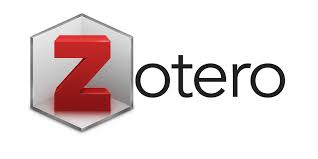Perbedaan Kemampuan Berpikir Kreatif Pembelajaran Daring Melalui Implementasi Multimedia Collaborative-Interactive (Co-Interactive) pada Masa Pandemi
DOI:
https://doi.org/10.29240/ja.v4i2.5222Keywords:
Creative thinking ability, Multimedia, Collaborative-interactiveAbstract
The research was conducted during the covid-19 pandemic and learning was carried out from and there were many technical obstacles and students' thinking abilities which tended to be low because they were unable to understand the material by being given in the form of modules only. During a pandemic, learning is carried out at home to avoid transmission. With this, educators must move actively so that learning can still be given. So that learning is needed with the help of interactive collaborative multimedia with the help of Learning Management Systems (LMS), zoom meetings, and YouTube as learning multimedia. Learning with zoom meetings to provide direct explanations to students about the material being studied. YouTube is given as a multimedia-based learning because students can see learning using videos. The research method used is an experiment with two classes, namely the experimental class and the control class as a comparison with conventional learning. The results obtained that there is an average difference between students with learning using interactive multimedia collaborative better than students with conventional learning.
Downloads
References
Akhdiyat, A. M., & Hidayat, W. (2018). Pengaruh Kemandirian Belajar Matematik Siswa Terhadap Kemampuan Berpikir Kreatif Matematis Siswa Sma. JPMI (Jurnal Pembelajaran Matematika Inovatif), 1(6), 1045. https://doi.org/10.22460/jpmi.v1i6.p1045-1054
Artikasari, E. A., & Saefudin, A. A. (2017). Menumbuh Kembangkan Kemampuan Berpikir Kreatif Matematis Dengan Pendekatan Contextual Teaching and Learning. Jurnal Math Educator Nusantara, 3(2). https://doi.org/10.29407/jmen.v3i2.800
Dilla, S. C., Hidayat, W., & Rohaeti, E. E. (2018). Faktor Gender dan Resiliensi dalam Pencapaian Kemampuan Berpikir Kreatif Matematis Siswa SMA. Journal of Medives : Journal of Mathematics Education IKIP Veteran Semarang, 2(1), 129. https://doi.org/10.31331/medives.v2i1.553
Faridah, N., & Aeni, A. N. (2016). Pendekatan Open-Ended Untuk Meningkatkan Kemampuan. 1(1).
Faturohman, I., & Afriansyah, E. A. (2020). Peningkatan Kemampuan Berpikir Kreatif Matematis Siswa melalui Creative Problem Solving. Mosharafa: Jurnal Pendidikan Matematika, 9(1), 107–118. https://doi.org/10.31980/mosharafa.v9i1.562
Marliani, N. (2015). Peningkatan Kemampuan Berpikir Kreatif Matematis Siswa melalui Model Pembelajaran Missouri Mathematics Project (MMP). Formatif: Jurnal Ilmiah Pendidikan MIPA, 5(1), 14–25. https://doi.org/10.30998/formatif.v5i1.166
Noviyana, H. (2017). Pengaruh Model Project Based Learning Terhadap Kemampuan Berpikir Kreatif Matematika Siswa. JURNAL E-DuMath, 3(2). https://doi.org/10.26638/je.455.2064
Purwaningrum, J. P. (2016). Mengembangkan Kemampuan Berpikir Kreatif Matematis Melalui Discovery Learning Berbasis Scientific Approach. Refleksi Edukatika, 6(2), 145–157. https://doi.org/10.24176/re.v6i2.613
Putra, H. D., Akhdiyat, A. M., Setiany, E. P., & Andiarani, M. (2018). Kemampuan Berpikir Kreatif Matematik Siswa SMP di Cimahi. Jurnal Matematika Kreano (Kreatif-Inovatif ), 9(1), 47–53.
Putri, C. A., Munzir, S., & Abidin, Z. (2019). Kemampuan Berpikir Kreatif Matematis Siswa melalui Model Pembelajaran Brain-Based Learning. Jurnal Didaktik Matematika, 6(1), 13–28. https://doi.org/10.24815/jdm.v6i1.9608
Rahman, R. (2012). Hubungan Antara Self-Concept Terhadap Matematika Dengan Kemampuan Berpikir Kreatif Matematik Siswa. Infinity Journal, 1(1), 19. https://doi.org/10.22460/infinity.v1i1.4
Rosita, I., & Nur, D. (2016). Meningkatkan Kemampuan Berpikir Kreatif Matematis dan Kemandirian Belajar Siswa dengan Menggunakan Model Pembelajaran Brain Based Learning. Jurnal Pendidikan Unsika, 4(1), 26–41.
Sanusi, A. M., Septian, A., & Inayah, S. (2020). Kemampuan Berpikir Kreatif Matematis dengan Menggunakan Education Game Berbantuan Android pada Barisan dan Deret. Mosharafa: Jurnal Pendidikan Matematika, 9(3), 511–520. https://doi.org/10.31980/mosharafa.v9i3.866
Tanjung, H. S. (2018). Perbedaan Kemampuan Berpikir Kritis Dan Dengan Menggunakan Model Pembelajaran Kontekstual Dan Pembelajaran Kooperatif Learning Tipe Numbered Heads Together. Maju, 5(2), 119–129.
Utami, R. W., Endaryono, B. T., & Djuhartono, T. (2020). Meningkatkan Kemampuan Berpikir Kreatif Matematis Siswa Melalui Pendekatan Open-Ended. Faktor Jurnal Ilmiah Kependidikan, 7(1), 43–48.
Downloads
Additional Files
Published
Issue
Section
Citation Check
License
Authors who publish with ARITHMETIC: Academic Journal of Math agree to the following terms:
- Authors retain copyright and grant the journal right of first publication with the work simultaneously licensed under a Creative Commons Attribution-NonCommercial-ShareAlike 4.0 International License (CC BY-NC-SA 4.0) that allows others to share the work with an acknowledgment of the work's authorship and initial publication in this journal.
- Authors are able to enter into separate, additional contractual arrangements for the non-exclusive distribution of the journal's published version of the work (e.g., post it to an institutional repository or publish it in a book), with an acknowledgment of its initial publication in this journal.
- Authors are permitted and encouraged to post their work online (e.g., in institutional repositories or on their website) prior to and during the submission process, as it can lead to productive exchanges, as well as earlier and greater citation of published work (See The Effect of Open Access).







